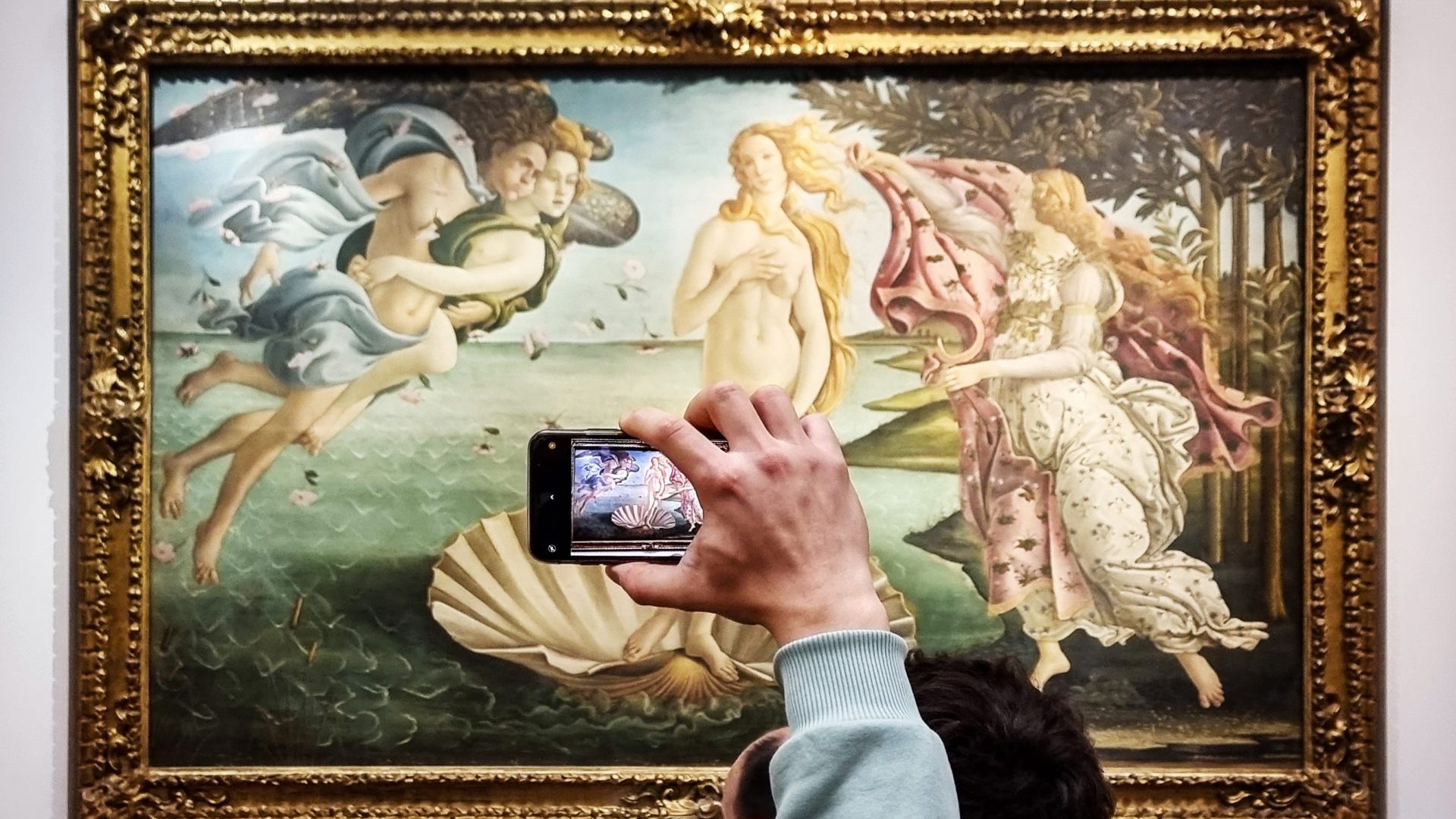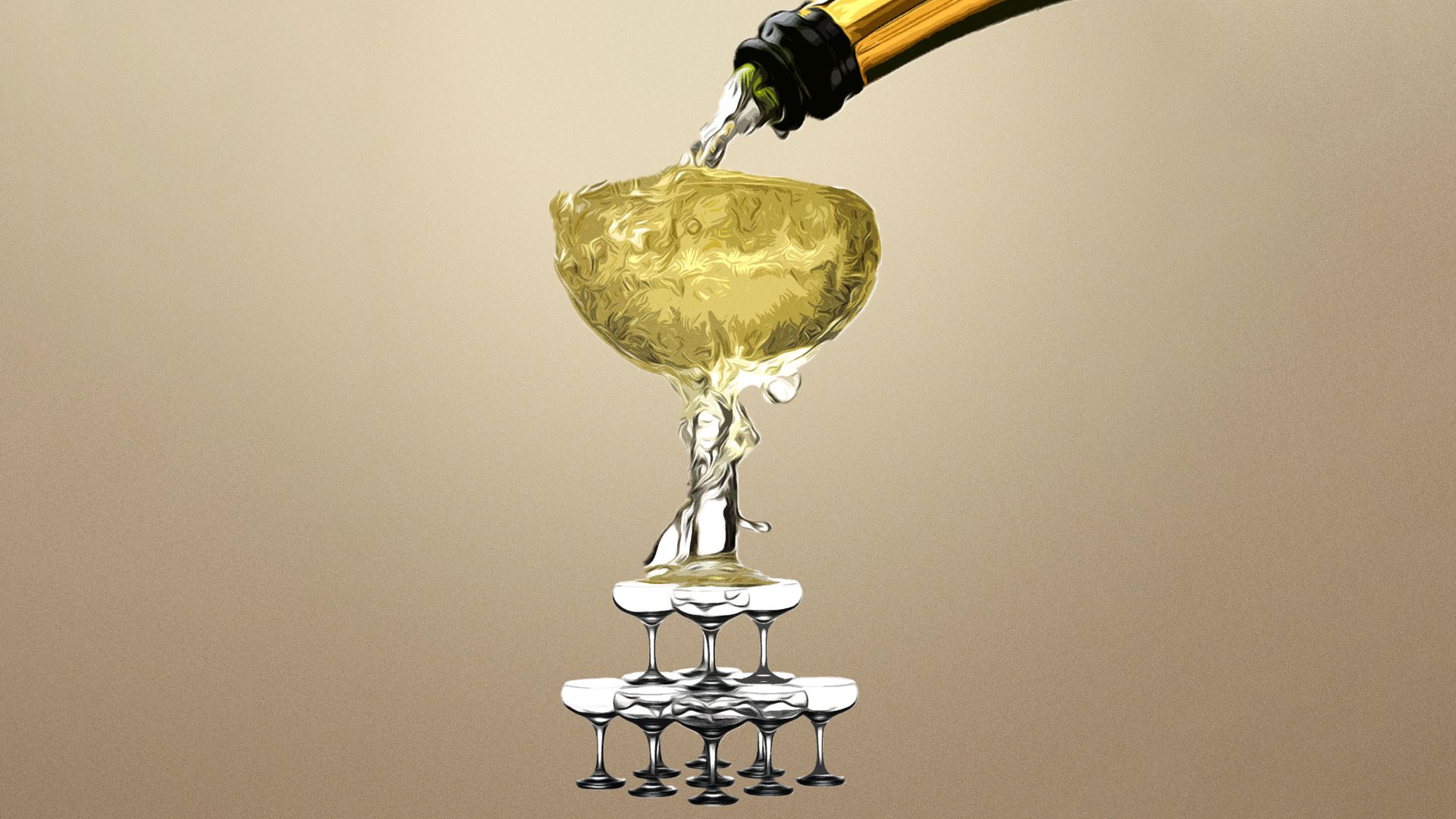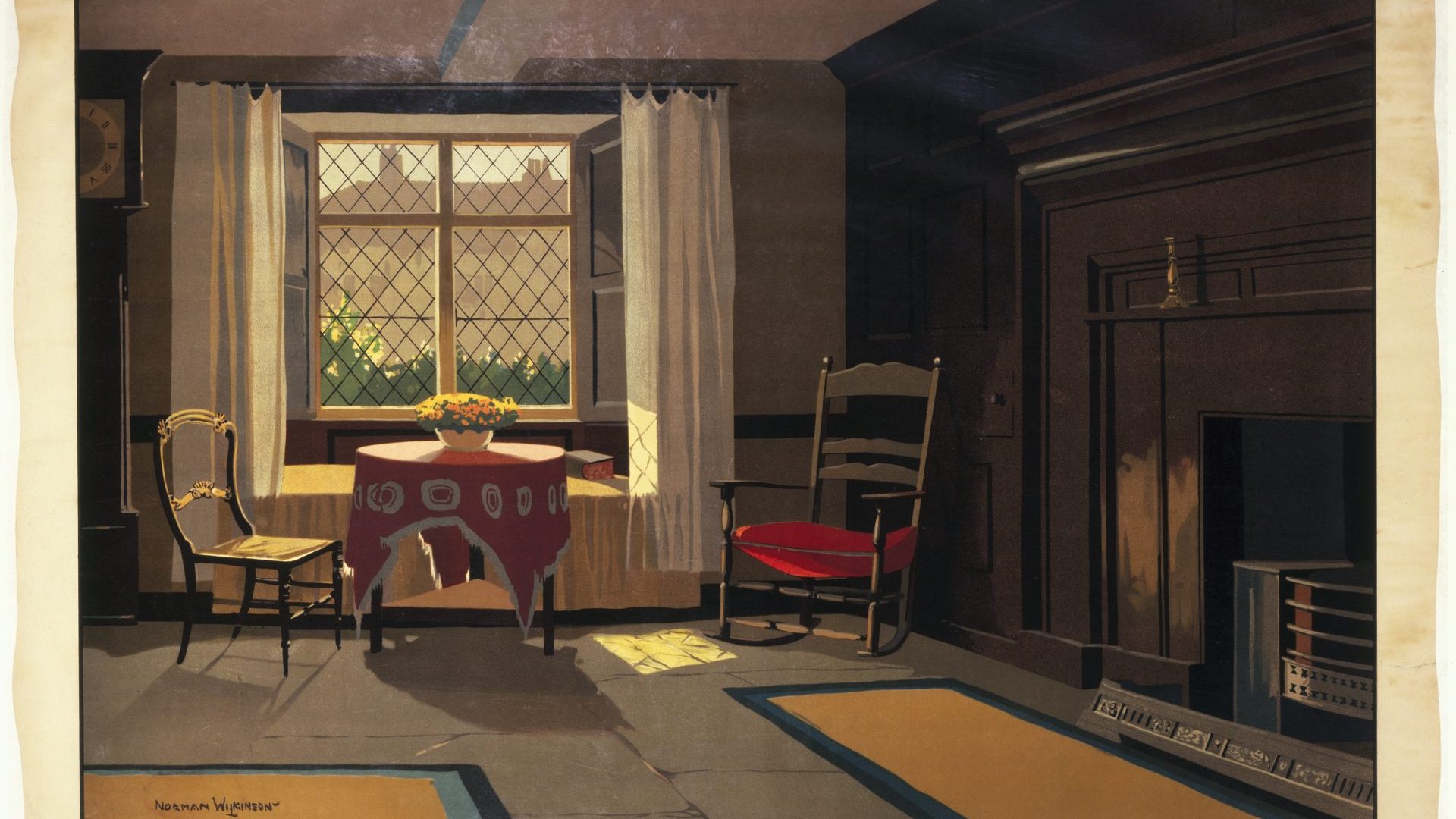I went to a performance of Messiah at Norwich Cathedral before Christmas. By candlelight. It was great. I am aware that to some people this experience will seem naff, middlebrow and suitable only for second-class minds. I am also aware that Messiah is a 24-carat-gold for-all-time masterpiece. Sure, Messiah is a very accessible bit of high culture. It’s in English. It’s got tunes you want to sing along with and rhythms to tap your feet to. It’s even got jokes: when the choir sings “All we like sheep have gone astray” they bleat. It’s got fireworks – stand up for the Hallelujah Chorus! – and it’s got haunting passages that send the soul soaring. And for all those reasons, a certain class of person – let’s call them snobs – will be inclined to despise both the experience and the music.
Undoubtedly, some art is born naff. So can even great art then have naffness thrust upon it? Can works of art themselves be despised because lots of people like them? Are they spoiled if those people first came upon them by adverts, films and fridge magnets? Or are they soured by overfamiliarity – diminished in some way because some of us may feel jaded at seeing their greatness for the nth time?
All I have to say about snobs is that it’s a dreadful pity about them. It’s not really the snobs I’m interested in: it’s the phenomenon of the wholly accessible masterpiece: the 24-carat works that invite you in, sit you down and pour you a large drink.
Not all great works are like that. TS Eliot’s The Waste Land, Bach’s Goldberg Variations, Picasso’s Les Demoiselles d’Avignon: their difficulty is part of the way they work. The first two chapters of Ulysses rip off the page but the third begins “Ineluctable modality of the visible: at least that if no more, thought through my eyes.” As James Joyce himself wrote in another context: “You is feeling like you was lost in the bush, boy?”
But the thing is that difficult art is not by definition better than easy art. Some great art asks you to take your shoes off and get comfortable while others demand that you put on your intellectual running spikes or your philosophical climbing boots fitted with scholarly crampons.
So let’s look at great art that happens to be highly accessible. Every work I have chosen has passed an acid test – that’s how you test gold – that shows it’s widely accepted as a 24-carat masterpiece.
None of these pieces are easy as in patronising, talking down to the audience, cutting corners to appeal to the commoner. Some aren’t easy at all – but they’re all welcoming.
So since we’ve started with Messiah, let’s continue with music. The second entry in my pantheon of accessible great art is Beethoven’s Fifth.
You can’t beat a good opening: this piece begins with the most famous two bars in all music. It continues with tunes, drama, a lilting slow movement, a mad moment when the double basses come bursting out with the main melody, followed shortly afterwards by a tumultuous unpausing transition into the last movement: a moment as famous among musicians as the opening bars are to the rest of us.
I conducted this work many times. I was a boy at the time: the tape recorder never missed a beat, the invisible audience roared silent applause and if I bowed like a bloody idiot at the end of it, I was filled with music. Beethoven invited me in and I never left.
Next, The Four Seasons. The fact that chunks have appeared in a million adverts and every single one of us has cursed it to the bottom circle of hell (“I’ll just put you on hold”) doesn’t mean it’s not a masterpiece. It takes the form of four violin concertos by Vivaldi and it’s full of barking dogs, buzzing flies, rain, thunder, gunfire, chattering teeth, slithering feet and tunes that demand that you dance. It’s full of joy. Some honourable mentions: The Brandenburg Concertos, especially no 4 with the flutes (Bach), Eine Kleine Nachtmusik (or almost anything else by Mozart) and more Beethoven, the Moonlight Sonata. But let’s finish this section with The Rite of Spring.
A riot (in some accounts) greeted its premiere in 1913, but it’s now established in the orchestral repertoire. Stravinsky’s acerbities and complex rhythms have been borrowed in a million film scores. The full work is no longer startling, but it has breathtaking power. It contains 444 changes of time signature: a work full of frightening, sexy and bewildering incantatory rhythms. It’s a familiar piece.
Can you get too much of a good thing? Is it possible for great art to become a cliche? That would appear to be a contradiction in terms, but modern technology means that any form of art can be aimed at us with such quantity and frequency that our senses – and our sensibilities – are overwhelmed.
David Frost (the good one) said that an intellectual was someone who could listen to the William Tell Overture without thinking of The Lone Ranger; that apparently never-ending cowboy series began with this music, along with the unforgettable words: “The Lone Ranger Rides again!”
Is it possible to listen to Ravel’s Boléro without thinking of Torvill and Dean skating for gold at the 1984 Winter Olympics? The Apprentice starts with Prokofiev, Antiques Roadshow with Bach. Football became fashionable again after the BBC’s coverage of the 1990 World Cup in Italy began with Puccini’s Nessun Dorma. But what did it do for Puccini? And what about adverts? Hamlet cigars and Bach, Carl Orff’s Carmina Burana and Old Spice, British Airways and Delibes: is it possible to listen to Bach’s suite number three (the bit known as “Air on a G string”, arranged in 1871 by August Wilhelm) without thinking of a cheap cigar? Is it OK to despise people who came to those pieces by way of television? Is it OK to despise the pieces themselves? Can Bach’s music ever really be an eye-rolling cliche like… well, there was once an editor who sent a memo to his staff ordering them to “avoid cliches like the plague”.
Let’s move to the visual arts. One advantage of a painting is that it can be perceived in its totality in 30 seconds, when you need 40 minutes for Beethoven’s Fifth and at least two months (or a lifetime) for Ulysses. That doesn’t make all visual art inviting: religious themes, biblical stories, classical allegories, portraits of forgotten people, Rembrandt shadows and cubist courtesans: none of these are straightforward. But some of the loftiest visual art is eager to make friends.
Take The Birth of Venus, the Botticelli version. A classical subject all right, but you don’t need to be foot-perfect in mythology to take delight in this depiction of beauty. Here is a new dawn: hope springing eternal from the sea, arriving on shore in a shower of flowers. It’s a vision of perfection that is just, only just out of reach.
Now, Almond Blossom. Vincent van Gogh made many paintings of almond blossoms between 1888 and 1890, all of them gorgeous, but here I’m referring to the one with just a flowered branch, blue sky behind. It’s one of the best-loved pictures ever painted, and another work of beauty and hope. Van Gogh painted it in the year of his death. Honourable mentions: Constable’s The Hay Wain, Hokusai’s The Great Wave off Kanagawa, practically everything by Monet, Turner’s The Fighting Temeraire. But since we started with a female nude it’s only fair to finish with Michelangelo’s David. It’s a biblical subject, but Michelangelo’s image of perfect male beauty is known and understood across the world. There he is, nonchalantly balanced on one hip, apparently just about to step down from his plinth, a deadly weapon worn as casually as Clint’s .44 Magnum, as if the issue had never been in doubt. Here is a gallant hero five metres tall, David reinterpreted as Goliath.
Problems arise when a great work of visual art becomes “iconic”. Once that’s happened it’s hard to see the damn thing as art. Is it possible to see the Mona Lisa as a picture of a comely woman in funky landscape? Durer’s praying hands are exquisitely drawn – but is it permissible to roll your eyes when they appear on a Christmas card from someone you don’t like? Does context alter the meaning – and power – of a work of art? I remember a pub discussion: what knowingly naff things do you have in your life? My companion – formerly Greenpeace’s man in the Antarctic – told me: “I’d sooner have my van Gogh prints than the originals of anyone else in history”. A novel requires commitment: time, concentration and personal organisation, and some are more welcoming than others. But there are novels of lasting greatness which demand that you turn the pages with the eagerness associated with airport thrillers.
First, Great Expectations. Here’s a book that belts along, filled with people who leap from the pages to be hated and loved. Charles Dickens brings us Pip the narrator, the convict Magwitch, the ice queen Estella, poor mad Miss Havisham, the unfailingly kind Joe, all bound together in a whirling plot that never misses its footing. Such larks, Pip! Such larks!
Next, Anna Karenina. It’s a long book full of Russian names, and that may be off-putting, but it’s still an archetypal story of doomed love, amour fou, and it draws you in without mercy. A character in Anthony Powell called it “a magazine story of the highest genius”. Who could resist that?
Honourable mentions: Pride and Prejudice, Jane Austen, Animal Farm, George Orwell, maybe Powell’s 12-volume A Dance to the Music of Time, a personal favourite. But we’ll finish this section with The Sun Also Rises.
Here is a modernist work that insists on being read: one glance at the first page and you’re gone. Ernest Hemingway’s novel is about (summary from the same Powell character) “an impotent good guy in love with a bitch”. It begins in Paris with the Left Bank expats of the 1920s before moving to Spain for the unfolding nightmare. And as any highbrow critic will agree, it’s the finest piss-up in the history of literature. Novels can’t be appreciated instantly but they can be popularised by films and television, thereby opening themselves up to snobbish disdain. That puts most of Jane Austen into dangerous territory, along with The Great Gatsby, Far From the Madding Crowd, Lolita and Doctor Zhivago. Are great works compromised by popularity? Does the fact that I’ve gone in to bat for Messiah and Almond Blossom and Great Expectations disqualify me from serious consideration as a follower of art and as a human being?
I have thrown a lot of questions in the air: perhaps they can only be answered by each separate individual who has a relationship with art – ie everybody on the planet. But now I think we should have an overall winner: one single shining example of totally irresistible high culture. For that we must turn to Shakespeare, whose job description was pleasing people: aim as high as you like, Will, but never leave the groundlings behind. My first thought was Hamlet, familiar enough, but well, he does go on a bit. Then I thought of Macbeth, opening with the witches, moving on to murder, and by the end we are in no doubt that evil can only ever lead to more evil. But in the end, I settled for Romeo and Juliet.
It’s about love. Love and hate, love and violence, love and death. Words always get the star part in Shakespeare: everyone knows fragments of the poetry of the two lovers. Then there are the fights and the fear, and the Queen Mab speech from the dashing Mercutio. Tragedy is inescapable from Romeo’s first sighting of Juliet: “Oh, she doth teach the torches to burn bright!”
Great art can be as forbidding as Finnegans Wake, Beethoven’s late quartets and Vincent’s Night Café. Great art can also be as welcoming as all the examples above. Accessibility is not a badge of inferior performance, any more than obscurity one of excellence.
All the above questions can, in the end, be answered by the same brief sentence. All that matters is the art.




